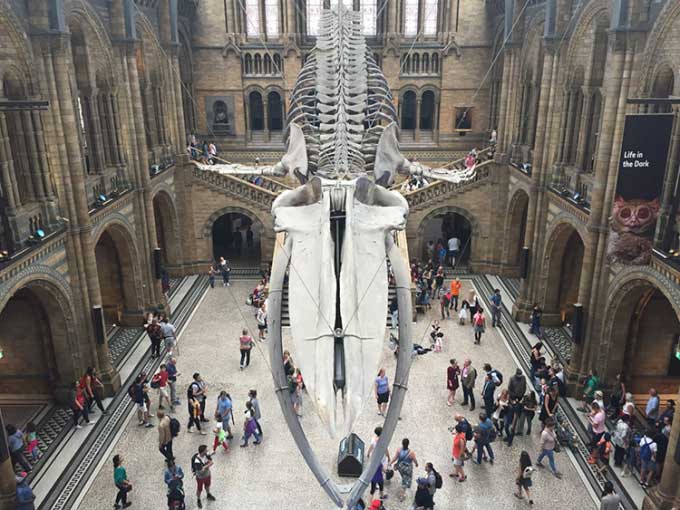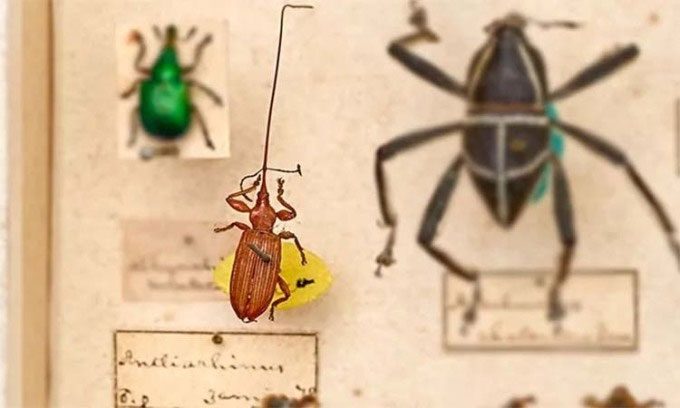The blue whale has a skull that can reach 5.5 meters in length, but it is not the species with the largest head in the world when considering body ratio.

The skeleton of the female blue whale Hope on display at the Natural History Museum, London. (Photo: Laura Geggel)
The blue whale (Balaenoptera musculus) is the largest animal to have ever existed on Earth. The largest blue whales (females) can grow up to 34 meters long, according to the National Oceanic and Atmospheric Administration (NOAA). At 5.5 meters in length, their skull accounts for less than a quarter of their body and serves as the support structure for the largest animal head on the planet.
Scientists believe that blue whales and several other whale species, such as the bowhead whale (Balaena mysticetus), which can have a skull length of up to 5 meters, evolved large heads and mouths to maximize their feeding efficiency in a single gulp. They belong to the baleen whale group, feeding by lunging forward with their mouths wide open to swallow as much water and prey as possible. They then expel seawater from their mouths through their baleen plates.
The bowhead whale has the largest mouth in the animal kingdom. Their mouths can reach lengths of up to 7.6 meters, while their entire body measures around 20 meters.
Determining which animal has the largest head relative to body size is much more complex. The animal kingdom is incredibly diverse, with possibly millions of undiscovered species. Additionally, creatures like octopuses, such as the Dumbo octopus (Grimpoteuthis), have unusual body structures that make it difficult for experts to clearly define what constitutes a head.
Octopuses have a head-like structure called a mantle and eight flexible arms. However, their mantle houses all their organs, including a brain. Each arm has its own nerve cells, allowing them to exhibit a form of independent thinking. From the outside, the mantle resembles a head, but since it contains not only the brain but also other organs, it complicates the identification of the true head.

The South African weevil has a very long snout relative to its body size. (Photo: Natural History Museum London)
Scientists may find answers to the question of which species has the largest head relative to body size within the insect kingdom. Bruno de Medeiros, an assistant manager of pollinator insects at the Field Museum of Natural History in Chicago, suggests several insect species that could take the title.
First, De Medeiros proposes species with large, bulky heads and strong mandibles, such as soldier termites or leafcutter ants, where the head makes up about half of the body size. He then mentions species with wide, flattened heads like the stalk-eyed flies in the family Diopsidae. The males use their eyes to appear larger than their rivals during competition. In the genus Cyrtodiopsis, some fly species have heads that are twice the width of their body length.
However, perhaps the clear winner in the insect kingdom is the South American weevil (Antliarhinus zamiae) female. This weevil is named after the type of plant it pollinates – the cycad. “The weevil possesses a snout that can be twice the length of the rest of its body,” de Medeiros states. While the body of the weevil (excluding the head) typically measures about 1 cm, its snout can reach up to 2 cm in length. The snout contains the eyes, antennae, and mouthparts of the weevil. The mandibles beneath the snout control the mouthparts, allowing the weevil to feed on seeds or bore into plants to lay eggs.


















































